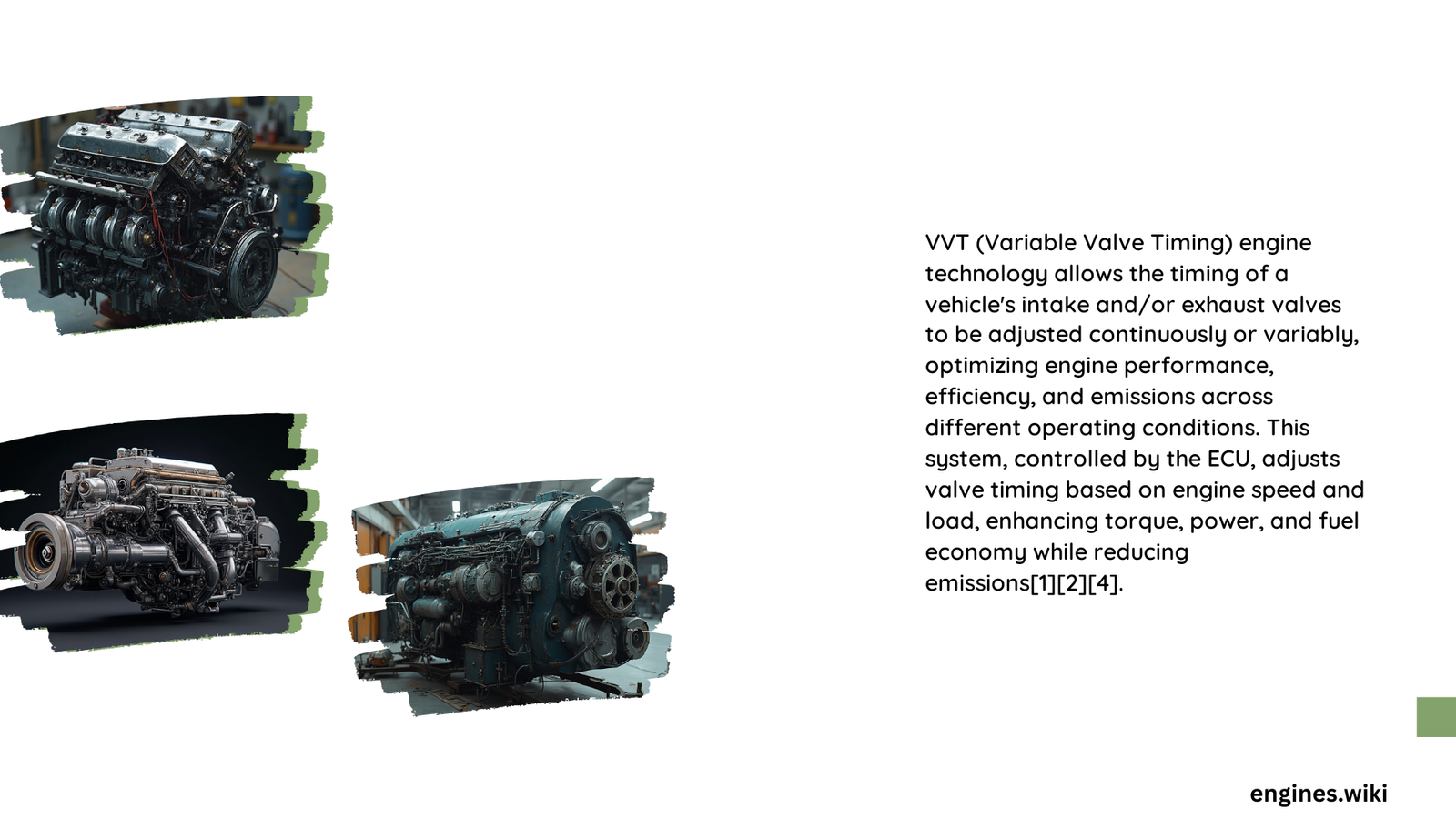Variable Valve Timing (VVT) represents a groundbreaking automotive engineering approach that dynamically adjusts engine valve operations, enabling unprecedented optimization of performance, fuel efficiency, and emissions control through intelligent camshaft positioning and precise electronic management.
What Exactly is VVT Engine Technology?
VVT engine technology means a sophisticated mechanical-electronic system designed to dynamically modify valve timing during engine operation. Unlike traditional fixed valve timing mechanisms, VVT allows real-time adjustments that enhance overall engine performance across diverse driving conditions.
How Does VVT Fundamentally Work?
Core Mechanical Components
- Camshaft Phasers: Rotational mechanisms enabling valve timing modifications
- Hydraulic Actuators: Control precise camshaft positioning
- Electronic Control Unit (ECU): Manages timing adjustments based on real-time data
| Component | Function | Performance Impact |
|---|---|---|
| Camshaft Phaser | Rotate Camshaft | ±50 Degrees Timing Adjustment |
| Hydraulic Actuator | Position Control | Millisecond-Level Precision |
| ECU | Data Processing | Continuous Optimization |
What Performance Advantages Does VVT Provide?
VVT technology delivers multiple performance enhancements:
- Fuel Efficiency Improvements
- Up to 15% reduced fuel consumption
- Optimized air-fuel mixture management
-
Reduced engine friction
-
Power Output Optimization
- Enhanced horsepower across RPM ranges
- Smoother torque delivery
-
Improved throttle response
-
Emissions Reduction
- Decreased CO2 emissions
- Lower nitrogen oxide production
- More environmentally friendly combustion
Which Manufacturers Implement VVT Technology?
Several leading automotive manufacturers have developed proprietary VVT systems:
- Toyota: VVT-i (Variable Valve Timing with Intelligence)
- Honda: VTEC (Variable Valve Timing and Lift Electronic Control)
- BMW: VANOS (Variable Nockenwellen Steuerung)
- Nissan: CVTC (Continuously Variable Valve Timing Control)
What Technical Challenges Exist in VVT Implementation?
While revolutionary, VVT technology presents complex engineering challenges:
- High precision manufacturing requirements
- Advanced lubrication system dependencies
- Increased mechanical complexity
- Higher initial production costs
How Does VVT Impact Modern Engine Design?
VVT represents a paradigm shift in engine engineering, transitioning from mechanical rigidity to dynamic, intelligent performance optimization. By enabling real-time valve timing adjustments, manufacturers can create more responsive, efficient, and environmentally conscious powertrains.
What Future Developments Are Expected?
Emerging VVT technologies are exploring:
– Fully electronic valve actuation
– AI-driven timing optimization
– Integration with hybrid and electric propulsion systems
Conclusion

VVT engine technology means more than a mechanical innovation—it represents a comprehensive approach to reimagining automotive performance, efficiency, and environmental responsibility.
